CBSE Class 10 Science Notes of Chapter 15 Our Environment, Video Explanation, and Question Answers
Our Environment Class 10 Notes – Here is a CBSE Class 10 Science Chapter 15 Our Environment Notes and Detailed Explanation.
Topics covered in the lesson Components of environment, Biological magnification, Waste, Ozone depletion, Environmental pollution, Montreal protocol, Ecosystem, Management of garbage, Food chain, Food web, Energy transfer in the food chain.
Given here is the Complete Notes of the chapter, along with all the important questions and NCERT solutions to book questions that have also been provided for the ease of students. Take Free Online MCQs Test for Class 10.
- See Video Explanation of Our Environment
- Components of environment
- Biological magnification
- Waste
- Ozone depletion
- Environmental pollution
- Montreal protocol
- Ecosystem
- Management of garbage
- Food chain
- NCERT book solutions
- Food web
- Energy transfer in food chain
Our Environment Introduction
The environment is the sum total of everything around an organism including both living and nonliving components. The living and nonliving factors influence the environment.
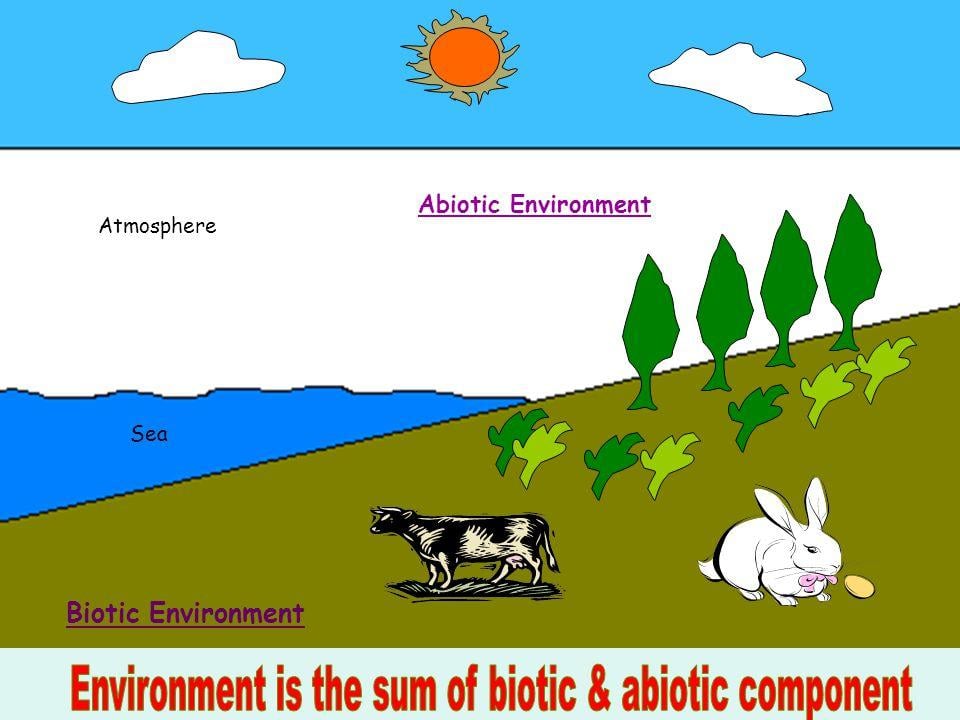
Our Environment Video Explanation
Components of environment
Abiotic: They are the nonliving factors that affect the environment. They include the following-
1) Climatic factors like wind, water, light and temperature.
2) Physiographic factors like height, slope.
3) Edaphic factors like minerals, soil, texture, soil organism, ph of the soil, etc.
Biotic : These are the living factors that affect the environment. They include the following-
1) Grazing animals
2) Insects
3) Lichens
4) Humans
5) Parasites
Our Environment Related Links –
| Our Environment MCQs | |
| Our Environment Video Explanation | Our Environment MCQs Video |
| Our Environment Important Question Answers | Our Environment Important Question Answers Video |

We come across many waste things around us like garbage, kitchen waste, etc. They are simply defined as useless or discarded materials. They may be gaseous, liquid or solid in nature. Their disposal is a big problem and on the basis of degradation, they are classified in the following ways:
- Biodegradable waste: It is the waste that is broken down by biological processes, like by the saprophytes. For example kitchen waste, sewage, cotton, cloth, etc.
- Non biodegradable waste:These are those wastes which can not be broken down by the biological processes. For example plastics, polythene bags, etc. This non-biodegradable waste creates environmental pollution.
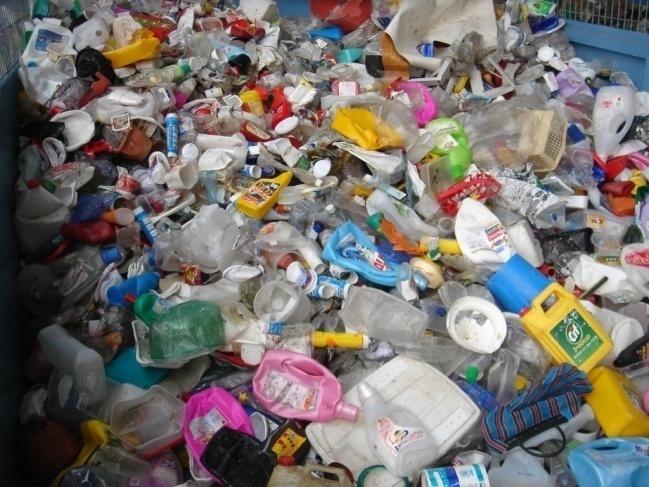
Environmental pollution
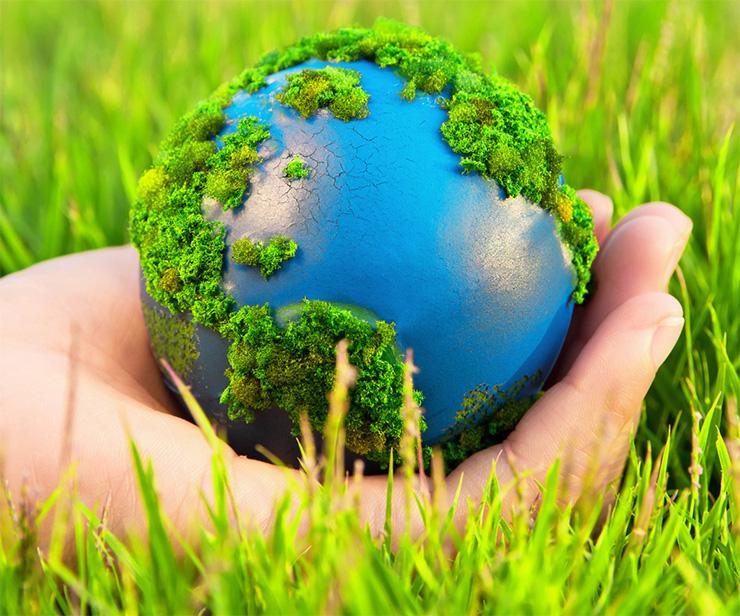
As you have seen many times that the resources around us are not clean and pure enough like air is not free of harmful gases, smoke, etc, water does not seem to be clear and transparent. They are actually polluted and have certain substances that make them look like they are polluted. Thus, we can define pollution as an undesirable change in the physical, chemical, and biological characteristics of air, water, and soil. This pollution has lead to several health-related problems like asthma, bronchitis, ecological imbalance, etc.
Ecosystem

It is a structural and functional unit of the biosphere comprising of living organisms and their interaction with food chain and biogeochemical cycles. For example a garden has many different plants in it such as grasses, trees, flowering and non flowering plants, animals like frogs, insects, etc. These organisms interact with each other and they are also affected by abiotic factors that affect their growth, reproduction and other activities. There are two types of ecosystem :
- Natural Ecosystem like the lakes, ponds, forests, etc.
- Artificial Ecosystem like the garden, crop field, aquarium, etc.
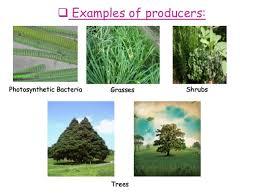
There are many organisms in the ecosystem which are categorized into different groups:
Producers :The organisms that can make their food by themselves by utilising solar energy like very small aquatic green plants called phytoplanktons.
Consumers: The organisms that depend upon producers for their nutritional requirement.They can be herbivores, carnivores and omnivores.
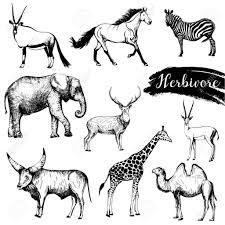
Herbivores: They are those that feed on green plants for their food.They are also called primary consumers.
Carnivores: The animals which depend on animals for their food requirement.
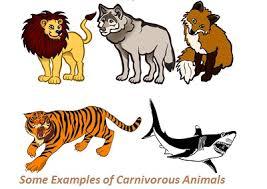
Omnivores :They are those animals that feed on plants. as well as on animals.
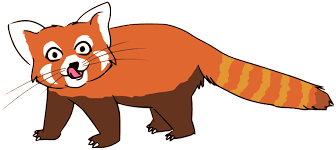
Parasites:They are those that live on other organisms body (host) either on or inside the food and fulfill its nutritional requirement.
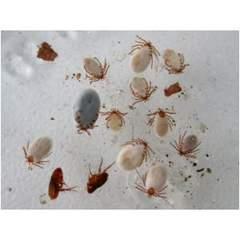
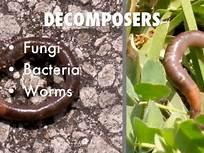
Decomposers:They are those organisms that feed on dead and decaying organic matter.Example: Microorganisms, etc.
Top
Related – Tips to score 95% in Class 10 Science Paper
Food Chain
It is the process of eating and being eaten or we can say that in this sequence, one organism eats another organism and the same is eaten by some other organism.
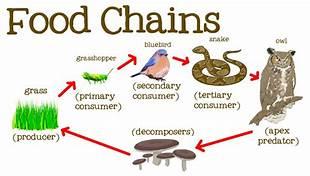
A food chain generally consists of producers, consumers and decomposers. Each step of the food chain is called its trophic level at which transfer of energy takes place. Usually a food chain consists of 4-5 trophic levels because after that energy availability is almost nil. The food chains are represented by drawing pyramids where different levels are occupied by different organisms as shown:
Examples of food chains:
Terrestrial Food Chain
(a) Green Plants → Deer → Lion
(b) Grass → Grasshopper → Frog → Snake → Hawk
For example: Aquatic Food Chain
(c) Aquatic Plants → Zooplankton → Small Fish → Large Fish
Food web
It is defined as an interconnected food chain. In this, any organism is eaten by several other organisms.
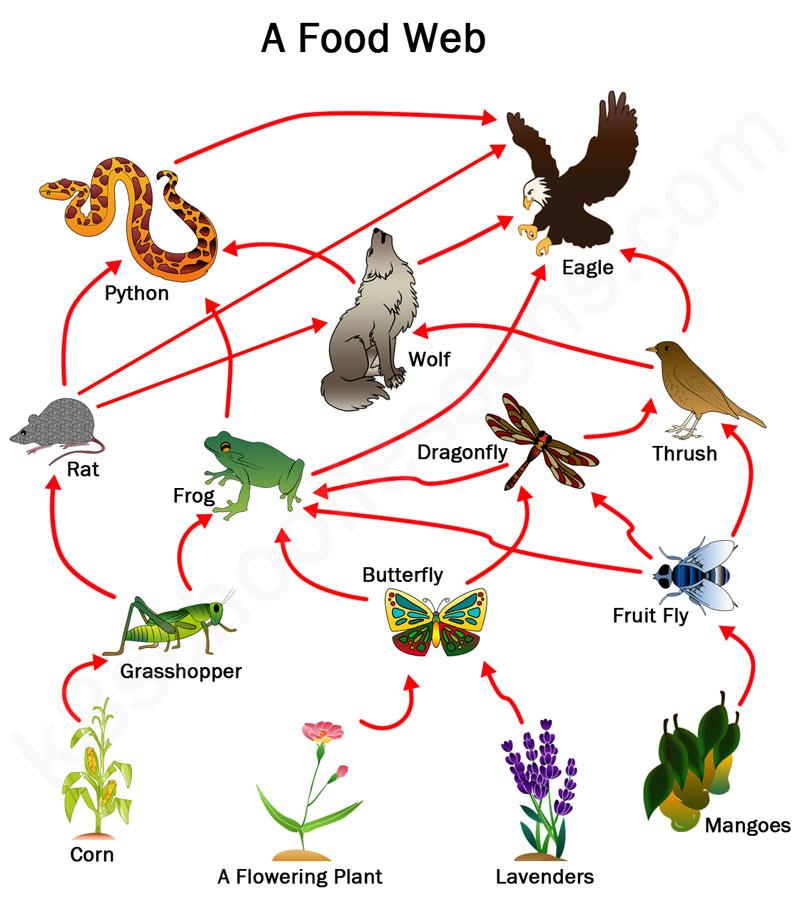
Energy transfer in the food chain
According to it, the energy that gets transferred at each trophic level in a food chain is only ten percent of the energy that was available at the previous level. It is described as follows:
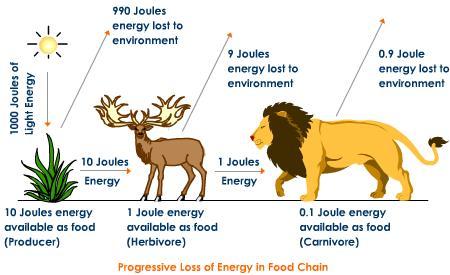
The green plants capture 1% of the energy of sunlight that falls on them and convert it into chemical energy of food. When primary consumers eat the green plants, a major part of energy is lost in the environment as community heat and only 10% of the energy available is transferred to another level. So this is the law that only 10% of total energy is transferred from one Trophic level to another.
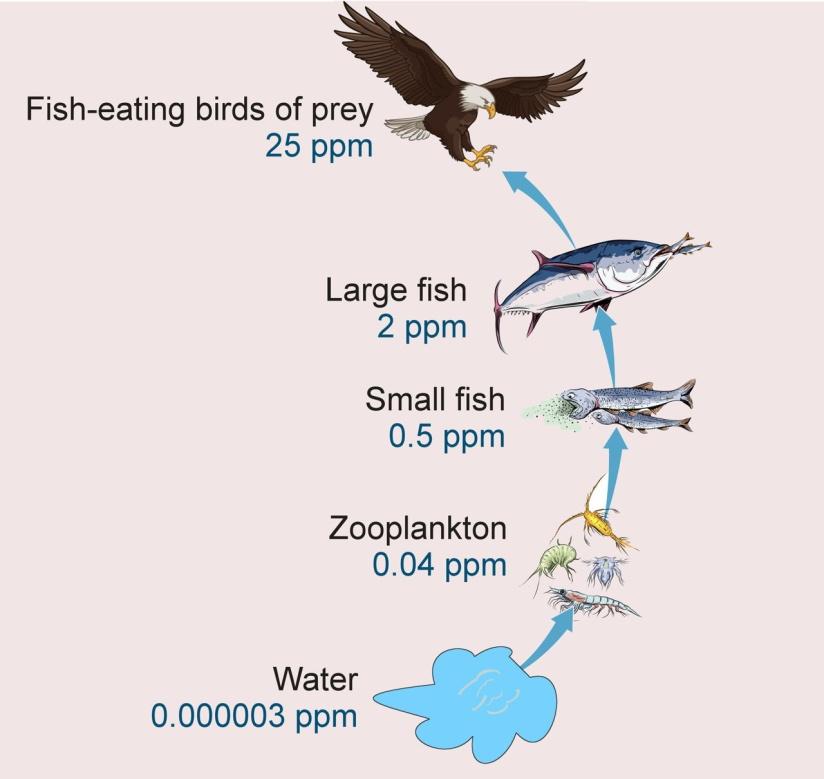
Biological magnification
It is defined as an increase in the concentration of some harmful substances at trophic levels. Sometimes some harmful chemicals may enter into the food chain. It is surprising to note that at each step, the concentration of it does not decrease like energy, rather it keeps on increasing at each level and the maximum sufferer is the last organism. Like in the given figure, the maximum sufferer is the lion.
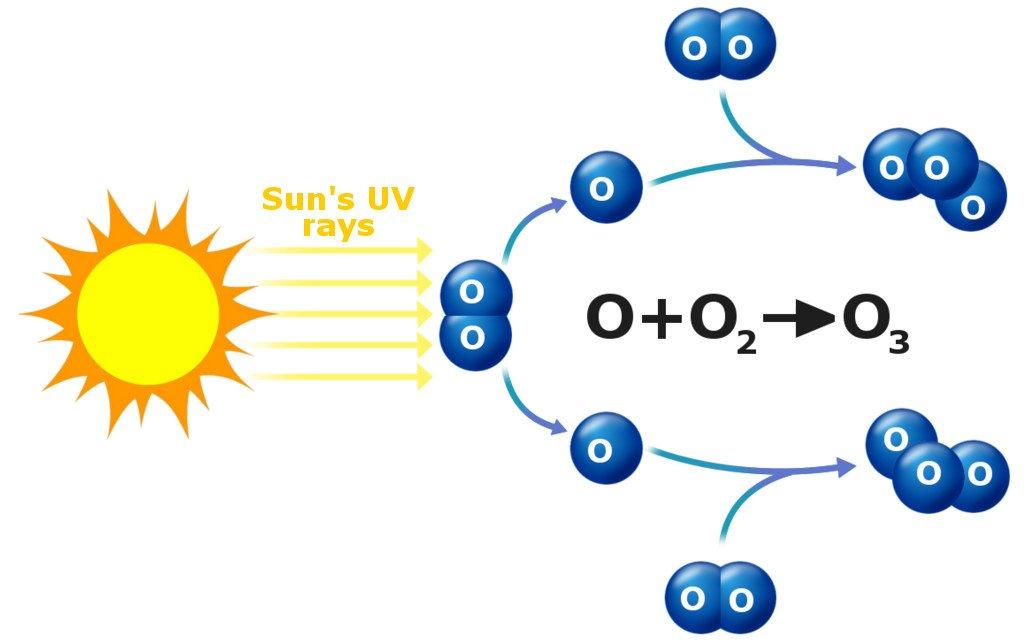
Ozone depletion
Ozone: It is a molecule of three oxygen atoms i.e. O₃. It is present in the stratosphere, a layer of the atmosphere. Ozone Is formed when u-v rays in upper atmosphere split oxygen atoms that is-
When oxygen molecule splits into atoms, then each atom combines with an undissociated molecule of oxygen to form ozone. Ozone protects us from the ultra violet radiations as it doesn’t allow them to enter the earth’s atmosphere.
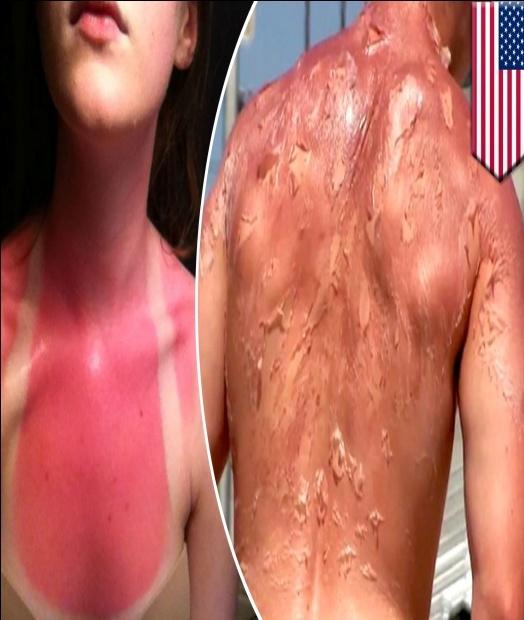
if they enter the earth’s atmosphere, they may harm us in many ways such as :
- They may raise the temperature of earth
- They can cause global warming
- They may cause skin disorders
- It can cause eye disorders and many more.
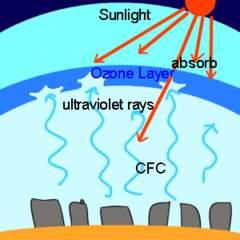
Ozone depletion
The thinning of the ozone layer by air pollutants is called ozone depletion. For this, some synthetic chemicals are responsible like Chloro Fluoro Carbons that are used in refrigerators, air conditioners, etc.
Montreal protocol
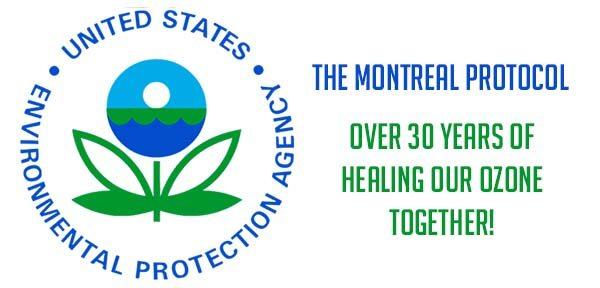
It is an agreement made by industrialized nations to freeze the production of CFCs and make use of some alternative source. It was done in 1987 UNEP (United Nations Environment Program). Now, instead of using CFCs, HFCS and PFCs are used that are somehow helping in saving the ozone layer.
Management of garbage
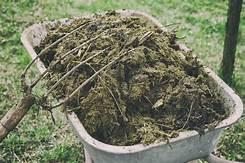
Garbage : It is refuse of fruits, vegetables and food along with other domestic waste. As these are considered as waste, there are certain methods for disposing the waste in the right way. These are as follows:
- Landfills
- Preparation of compost
- Burning at high temperature (incineration).
- Production of biogas and manures
Top
Important Videos Links
NCERT Solutions Class 10 Our Environment
1. Which of the following groups contain only biodegradable items?
(a) Grass, flowers and leather
(b) Grass, wood and plastic
(c) Fruit-peels, cake and lime-juice
(d) Cake, wood and grass
Ans. (a) Grass, flowers and leather , (c) Fruit-peels, cake and lime-juice, (d) Cake, wood and grass contain only biodegradable items.
2. Which of the following constitute a food-chain?
(a) Grass, wheat and mango
(b) Grass, goat and human
(c) Goat, cow and elephant
(d) Grass, fish and goat
Ans. (b) Grass, goat and human
3. Which of the following are environmentally-friendly practices?
(a) Carrying cloth-bags to put purchases while shopping
(b) Switching off unnecessary lights and fans
(c) Walking to school instead of getting your mother to drop you on her scooter
(d) All of the above
Ans. (d) All of the above
4. What will happen if we kill all the organisms in one trophic level?
Ans. If we kill all the organisms of one trophic level, it will create an imbalance in the ecosystem.
For example, in a food chain:
If lions are removed from the above food chain, then population of deer will increase which will cause overgrazing. This will lead to deforestation. It may even lead to soil erosion, causing further conversion of fertile land into barren desert.
5. Will the impact of removing all the organisms in a trophic level be different for different trophic levels? Can the organisms of any trophic level be removed without causing any damage to the ecosystem?
Ans. Impact of removing all organisms of a trophic level is different for different trophic levels. For example, if we remove producers from a food chain, no organism will get food, if we remove herbivores from a food chain then carnivores will die and producers will also die due to competition for space and nutrients. If all the organisms of a trophic level are removed it will create an imbalance in the ecosystem. Removing any trophic level from a food chain will cause imbalance in an ecosystem.
6. What is biological magnification? Will the levels of this magnification be different at different levels of the ecosystem?
Ans. Biological magnification is defined as the phenomena of accumulation or increase in the concentration of some toxic substances at each trophic level. It has been observed that some harmful or poisonous substances like: DDT sprinkled to kill pests on food plants get washed down into the soil or into the water bodies. From the soil, these chemicals are absorbed by plants along with water and minerals whereas aquatic plants and animals take up these chemicals from water bodies. On eating these plants or aquatic plants and animals, the toxic substances enter into our body. Yes, the magnification is different at different levels of the ecosystem. The animals at the higher trophic levels get more poison along with their food than animals at lower trophic level. Thus, as the levels of food chain increases, the magnification also increases.
7. What are the problems caused by the non-biodegradable wastes that we generate?
Ans. Following are some problems caused by non-biodegradable wastes:
(a) They cause biomagnification.
(b) They increase pollution.
(c) They make environment unclean.
(d) They kill useful microorganisms.
8. If all the waste we generate is biodegradable, will this have no impact on the environment?
Ans. If all the waste generated would be biodegradable this will also create problems as the process of decomposition is quite slow so waste will start accumulating. Biodegradable waste would affect the environment in the following two ways:
(i) Some biodegradable substances like cow-dung blocks the sewerage pipes and produce foul smell thus pollutes the surrounding environment.
(ii) Some biodegradable substances like fruit and vegetable wastes serve the breeding site of flies and mosquitoes which causes various diseases in the surrounding environment.
9. Why is damage to the ozone layer a cause for concern? What steps are being taken to limit this damage?
Ans. Due to the depletion of the ozone layer ultraviolet rays reaches the earth surface and causes the following harmful effects:
(i) Causes skin cancer.
(ii) Causes eye disease called cataract.
(iii) Damage the immune system, thus lowering the body’s resistance to diseases.
Steps to reduce the damage:
(i) Use of aerosols should be banned.
(ii) Many countries have banned the use of CFCs as refrigerants.
(iii) Pollution should be reduced.
Class 10 Science Chapter-wise Explanation
